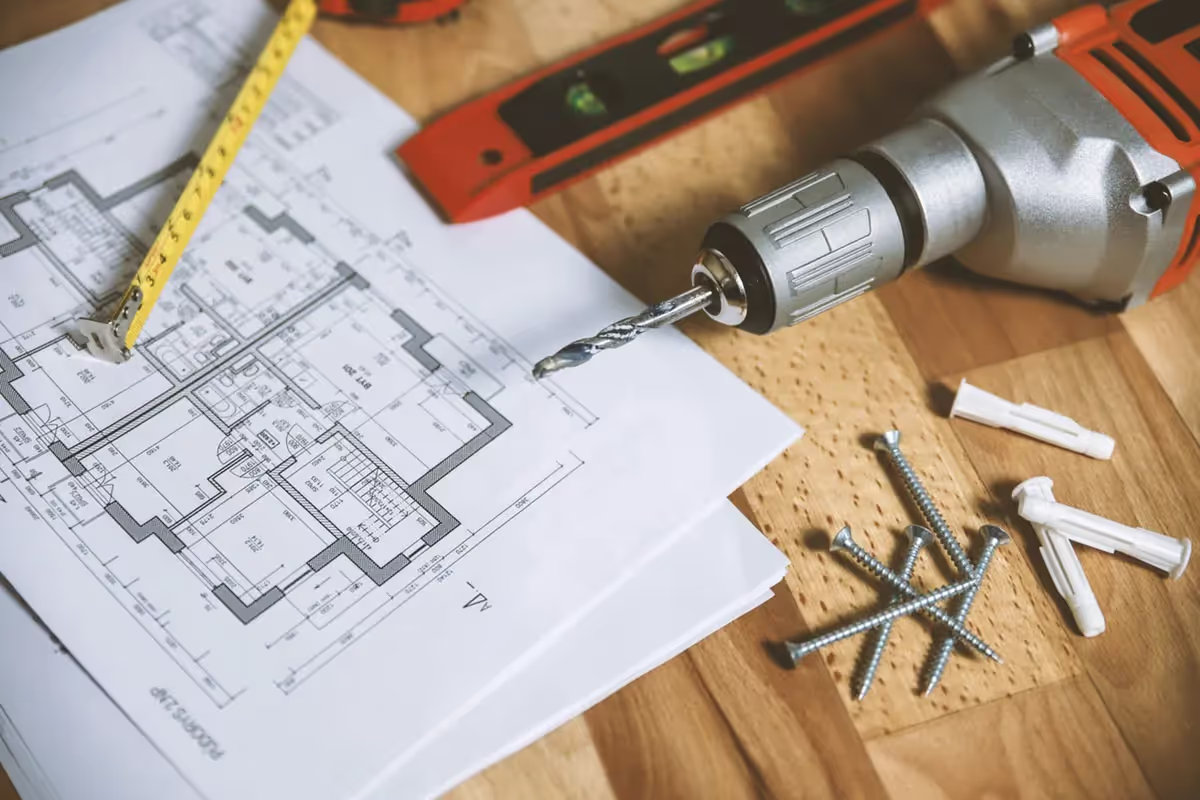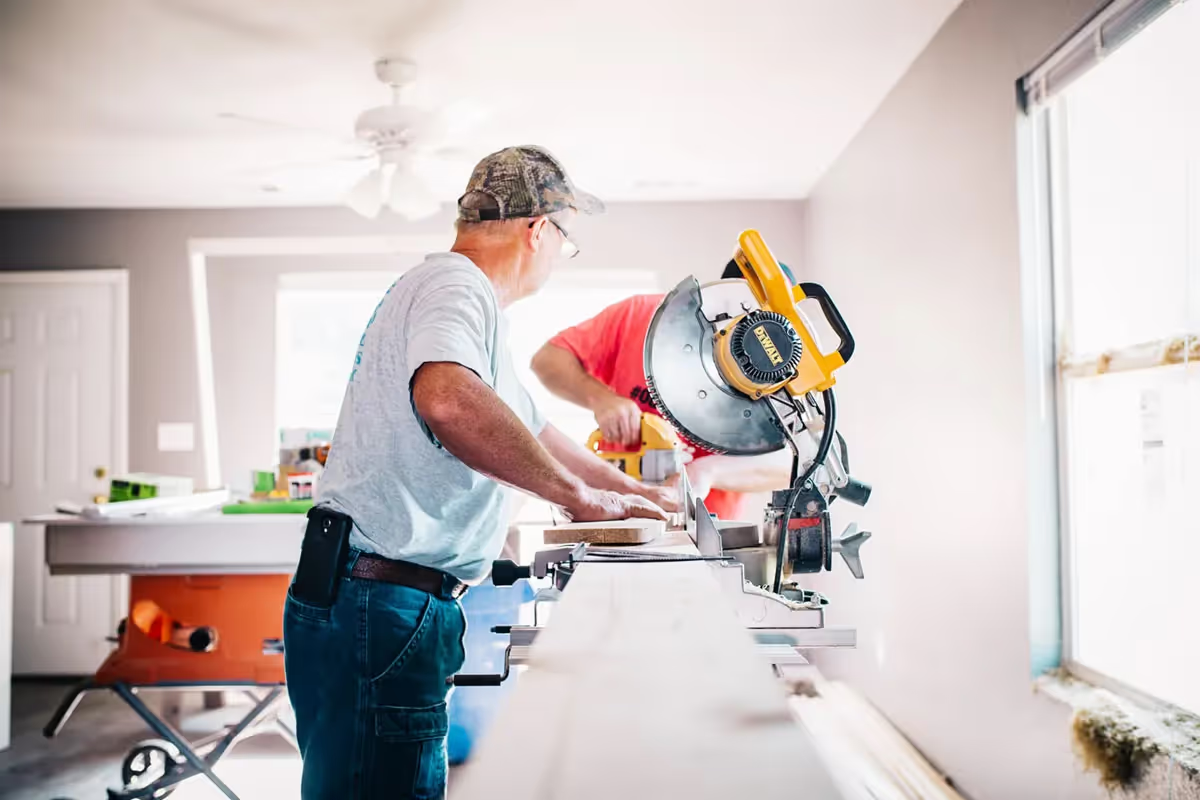Starting your own home improvement business can be a very rewarding experience. Not only do you get to be your own boss, but you'll get to go into a market that is rapidly growing due to a demand in home improvement services and a preference for modern technologies.
A study by Global Market Insights estimates that the home remodeling market will realize a 4.1% CAGR from 2021 to 2027, which is not to say that starting a home
improvement business is easy.
When starting, there are many factors to consider, such as handling licensing and insurance requirements, marketing your business, and finding your first client. If done incorrectly, you might end up spending more money than you make.
In this blog post, we will provide you with some tips on how to start a remodeling business and get your first client!
Is there good money in remodeling?
Before finding out how to start a remodeling business, most people want to know if it is profitable. In the US, homeowners spent $353 billion in the first quarter of 2021, which means that there is definitely a market for remodeling services.
If you can provide high-quality services at a reasonable price, then you will be able to find clients who are willing to pay for your services. It is important to remember that the key to success in any business is finding a niche and becoming an expert in that area. For example, if you are good at kitchen remodeling, you should focus your business on that area. Clients are always looking for businesses that can provide expert services in a specific area!

How to start a remodeling business
If you're wondering how to start a home renovation business, here's a step-by-step guide to help you get started in the home improvement business:
Step One: Conduct market research
Before starting any business, conducting market research is important, but it's especially crucial in the home improvement industry. Market research will help you understand your target market, what services for which they're looking, and how to price your services.
There are various ways to conduct market research, such as the following:
- Customer surveys: You can do mail, online, in-person, or phone surveys. However, remember that each option here has its advantages and disadvantages. For instance, you can conduct in-depth research via both online and phone surveys, but online surveys are the cheaper option.
- Competitor analysis: You can use social media analytics tools to see what your competition is doing, who their target audience is, and what kind of content they are sharing.
- Industry reports: You can purchase or download various industry reports for free that will give you an overview of the home improvement industry.
- Content surveys: These surveys allow you to find out in what content your target audience has interest, and they can be done through social media, blog comments, or even emails.
Step Two: Create a business plan
A business plan is a document that outlines your business goals, strategies, and execution. It's important to have a solid business plan before starting your home improvement business because it will help you stay organized and ensure you're covering all of your bases.
Your business plan should include the following key elements:
- Business overview: This section should include an overview of your business, including your business name, mission statement, and the services you plan on offering.
- Target market: In this section, you'll need to identify your target market and describe their needs.
- Competitive analysis: Here, you'll analyze your competition and describe how you plan on differentiating your business from the rest.
- Marketing and sales strategy: Your marketing and sales strategy should include how you plan on promoting your business and generating leads.
- Financials: This section will outline your start-up costs, operating expenses, and projected revenue.
Do not forget to include the location of your business in your plan. To find the best location for your home improvement business, consider the following factors:
- The amount of foot traffic in the area
- Competition from other businesses
- Zoning laws and regulations
Step Three: Choose a business structure
There are several different business structures from which you can choose, such as sole proprietorship, partnership, LLC, or corporation.
The type of business structure you choose will determine what kind of legal and tax implications your business will have.
A sole proprietorship is the easiest one to form, and it does not require much paperwork. However, you'll be responsible for all debts and liabilities incurred by your business.
A partnership is when two or more people go into business together. You'll need to create a partnership agreement that outlines each partner's roles, responsibilities, and ownership stake in the business.
LLCs are popular among small businesses because they offer personal liability protection and tax advantages. For instance, if your business is sued, an LLC will
protect you from personal liability.
Corporations are more complex and expensive to form, but they offer the best protection from personal liability.
Step Four: Register for taxes
The next step is to register your business for taxes. First, you'll need to obtain a federal tax ID number, also known as an Employer Identification Number (EIN), which can be done online through the IRS website.
Once you have your EIN, you'll need to register for state and local taxes. The best way to do this step is to contact your state's tax office or check their website.
Taxes differ depending on the business structure you choose. For instance, sole proprietors and LLCs are taxed as individuals, while corporations are taxed as
separate entities.
Step Five: Get business licenses and permits
To operate your home improvement business, you'll need to obtain various licenses and permits from your state or local government. The requirements vary depending on where you live, so it's best to contact your local government office for more information.
Some of the most common licenses and permits you'll need include a business license, contractor's license, and building permit.
Ensure that you do not start operations without the proper licenses and permits, because you could face hefty fines.
Step Six: Purchase insurance
Another important step in starting your home improvement business is to purchase insurance, as it will protect you and your employees in the case of an accident or injury.
You should consider several different types of insurance, such as workers' compensation, liability, and property insurance.
You can purchase insurance through an insurance agent or directly from an insurance company.
To choose the best insurance company, remember to consider the following:
- The reputation of the company
- The company's ease of doing business
- Cost of insurance
- Amount of coverage: does it cover all business needs?
Step Seven: Set up accounting
When starting a company, you need to record your income and expenses to track the financial health of your business, and the best way to do so is by hiring someone to keep records for you.
When looking for an accountant, look for someone who specifically has experience with small businesses. Ideally, also try to find someone that can help you file your taxes each year.
If you do not want to hire an accountant to handle your finances, accounting software and bookkeeping services are excellent alternatives! There are several different types of accounting software from which to choose, such as QuickBooks, Wave Accounting, and Xero. In regards to bookkeeping services, they can be expensive, but they may also be more convenient.
Step Eight: Market your business
No matter how good your products or services are, you won't make money if no one knows about them. That's why it's important to market your home improvement business effectively!
There are many different ways to market your business, including the following:
- Advertising: print, online, or television
- Social media: Facebook, Twitter, and Instagram
- SEO: optimizing your website for search engines
- PR: getting positive press coverage
It's important to test different marketing strategies and see which ones work best for your business.
Step Nine: Purchase equipment
If you haven't already purchased all the equipment you need for your home remodeling business, now is the time to do it. Ensure that you get high-quality equipment that will last.
Some of the most important pieces of equipment you'll need include the following:
- Ladders
- Power tools
- Safety gear
- Transportation: truck, van, and/or trailer
Remember to shop around and compare prices before making a purchase. You can also rent equipment if you don't have the capital to buy it outright.
When buying equipment, make sure you check for the following:
- Quality: Can the equipment remain strong even after exposure to harsh conditions such as weather?
- Technology: Look for the latest technology that will enhance your overall performance.
- Fuel efficiency: Make sure all the heavy equipment you buy will save you money in energy costs.
- Your knowledge in using the equipment.
- The reputation of the dealer from which you are buying your equipment. Do they sell original equipment or knockoffs?
Step Ten: Get started!
Now that you have all the basics, it's time to get started! Remember to take steps one at a time and don't feel pressured to do everything at once.
If you plan on hiring employees for your home improvement business, there are a few steps you need to do first. Specifically, you'll need to obtain workers' compensation and unemployment insurance, as well as create a written employee policy manual.
Now that you know how to start a remodeling business, let's explore more details that will help make your venture successful.

How to get your first client for your home improvement business?
Aside from advertising, what other ways can you get your first client? Here are some tips to help you out:
Use commercial lead generation services
Lead generation services help to connect business owners with potential customers. There are many different types of lead generation services, such as Houzz and Porch. These sites have individuals looking for house improvement services, so these people are much more likely to convert to customers.
To choose a lead generation service that suits your needs best, consider these factors:
- The size of your target market
- Your budget
- The type of leads for which you're looking
Network
Another way to get your first client is by networking. Attend local business events and meetups, as well as industry conferences. You never know whom you’ll meet and what opportunities will arise.
Always demonstrate your expertise while at these events. Potential customers want to know that they’re getting real value when hiring you. Thus, instead of just assuring them that you can get a job done, show them that you’ll go above and beyond to solve all their problems.
Be active on social media
Social media is a great way to connect with potential clients. You can post about your home improvement business and answer any questions people have.
Make sure that you use different methods to convey your message. For example, use a healthy mix of videos and pictures to show potential clients what you offer.
Partner with complementary businesses
Partnering with complementary businesses, such as your local hardware store, is a great way to do reciprocity marketing and get your business in front of potential customers.
Work together to host events or create joint marketing campaigns. You can also offer discounts to customers when they purchase services from both you and your partner's business.
Provide free estimates
When a customer asks for an estimate, always give it to them for free, as it is a great way to show your potential customers that you're an expert in your field and that you're confident enough to back up your services with a free estimate.
Provide an online consultation service
An online consultation service is where you offer consultation to potential clients over the internet. This service is a great way to get clients outside your local area, and it can be done through video conferencing or email. Furthermore, it allows you to showcase your expertise and get new business from anywhere in the
world.
Ask for referrals
Ask your friends and relatives for referrals, as word of mouth is one of the best ways to get new business. When people know that you're good at what you do, they'll be more likely to refer their friends and family members to your home improvement business.
When you get your first client, be sure to do the best job you can and then ask them to refer you to their friends. Getting referrals will help you get more customers and grow your home renovation business.
How to grow your home improvement business
Once you have your first client, you should start getting more clients and growing your business. Let's look at some tips to help your business attract more clients.
Build a strong team
A strong team is essential for any business. When you have a team of experts working with you, it makes getting new clients easier.
Your team should be able to handle all aspects of the home improvement process so that you can focus on acquiring new customers. Moreover, ensure that your team is qualified and has the experience necessary to do a great job when hired.
Build a strong network
You can grow your network through networking events, industry associations, entrepreneurship groups, and social media.
Make sure that you're always meeting new people and making connections. The more people you know, the easier it will be to find new clients for your business.
Create a portfolio
A portfolio is a great way to show potential clients your skill and talent. When you have a strong portfolio, it's much easier to get new business.
Your portfolio should highlight your best work and showcase the variety of services you offer. Make sure that your portfolio is up to date and that you're constantly adding pictures of new projects.
Invest in marketing
Similar to any other business, you'll need to invest in marketing if you want your home improvement business to grow. The amount of money you'll need to spend will depend on the type of marketing strategy you choose, but make sure that you're prepared to invest in marketing to reach your target audience and get new clients.
Create a valuable website
A home renovation website will help you attract new clients and grow your business.
Your website should be designed to showcase your work and highlight the services that you offer. Furthermore, your website should be easy to navigate, and it should contain all the information that potential clients will need.
Ideally, your website should also be mobile-friendly, so that people can easily access it from their cellular devices.
Conclusion
Starting a home renovation business requires dedication and passion about your work. You need to be prepared to invest time and money into marketing, so you can reach your target audience.
Similar to other businesses, you need to have a strong team in place and put in the work to create a great brand image. Remember to follow the step-by-step guide we've provided when starting your home improvement business. With these tips, you should be able to grow it into a successful enterprise!





